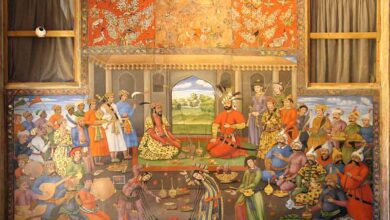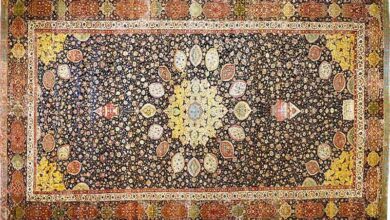Psychological impact of colors in childrens book illustration

Illustration is an art and art is creativity. Illustration and illustration in fact and illustration depicting the story in a creative way that is taken from the culture of each nation and being global next to it and attracting the audience.
In such a way that the audience witnesses the relationship between the image and the text in a tangible way. Even if he does not read the text, he will realize the depth of the story in a short summary. Every illustration must be up-to-date and communicate with the mind of the audience and their feelings.
The human eye is fascinated by colors. We mix colors so we can capture the depth of the story’s emotion. Art illustration is to attract the audience and this will play an important role in the advertising works influenced by art in marketing.
The image has always had a special place in children’s books and magazines. Today, especially children’s book illustration has become one of the favorite fields of art students. Criticism of children’s book illustrations around the world is generally done with two approaches. A number of believers, especially art experts, examine the illustrations in children’s books from different artistic perspectives and ignore the connection between the illustrations and the text that together create the literary work. But many others, who are mostly experts in children’s literature, consider picture books to be a form of children’s literature and examine its literature. Our discussion in this project is about the psychology of color in children’s book illustration.
We need to know enough about the child first, including who the child is. Physical and mental characteristics, fear, learning ability play, imagination and so on. How is he? And then there is the issue of color recognition and color psychology in child illustration.
In child illustration, we are in contact with a person who is an adult and only in our eyes is a child. But they look at it in their own world and according to its logic and existential understanding. This is where the art of illustration comes into play. Children in a global society have global expectations. If we only deal with our culture and nation in terms of design, it will not meet the esoteric need in them. We need to combine culture and globalization to create a creative image for children by addressing the psychology of color. So that the child can visualize the story in the world of colors with pictures.
Since the books available in the publishing markets are not able to respond to the perception and mentality of the children of the audience, the issue of proper design (both in terms of form and color) and in harmony with the psychological characteristics of children is very important.
1- What is the place of color in a child’s illustration? The first element that attracts the child in the image is color, happy colors are more attractive to children than matte colors.
2- Can the pictures in the book spoil the child’s mental image of the book? No, on the contrary, some texts may not have a picture in the child’s mind. But the pictures drawn next to the text, along with the use of appropriate and attractive colors, can help to form the story and expand it in the child’s mind.
A look at the existing research works in the field of children’s book illustration shows the current poverty in this field.
Illustration History
Throughout history, illustration has been nothing but narration or storytelling. But the beginning of storytelling in writing was with the beginning of mythical civilizations and the emergence of forms of writing lines with the help of which mythological legends were written in stone inscriptions and seals or papyrus.
The art of illustration before the advent of the Late Paleolithic and Mesolithic lines in examples such as cave paintings was nothing but magical painting. At that time, the motifs associated with the magical transfer of the mysterious powers of the natural world into the collective life of human beings and at times hunting for the domination and power of animals, or at other times with ritual ceremonies for domination and destructive powers. Nature and شد were depicted.
In the Orient, for example, in China, illustration was a symbolic retelling of a variety of motifs. And gradually, under the influence of the teachings of sages such as Lao Tzu, the illustrator, a kind of admonition and poetic payment of natural phenomena.
In the land of Iran, the tradition of miniature painting after the Abbasid and Seljuk periods to the Timurid period and after the beginning of the modern era in the Safavid era, visual and narrative motifs have been the narrators of stories and poetic anecdotes. In the last hundred years of contemporary illustration in the style of coffee house and Saqakhaneh, the epic stories of Shahnameh have once again depicted in religious projects and anecdotes such as the stories related to the event of Karbala.
The art of illustration is a branch of applied arts that the illustrator uses to express his ideas and perception of the visual elements in the best way. The illustrator must learn and know that while creating the image and observing its principles, he must monitor the different tastes of the clients and the vertical minds. The illustrator should try to present the messages that he / she is trying to convey in terms of subject and intellectual content and the form and format of his thoughts, very rich and valuable and with full observance of aesthetic principles.
In the past and before the emergence of applied arts, the activities of some artists were more in the field of printing. And illustrators were the only illustrators in the printing industry. The art of illustration, which is one of the applied arts, is a branch of graphics. Illustration is an art in which the illustrator engages in illustrated narration. The subject of the illustrator’s work can be one of the religious, literary, historical, scientific and other stories.
Different arts, despite the fact that each uses specific tools and methods of performance, but the common point between them is visual expression. The use of all facilities in the art of illustration has led to the multiplicity and variety of specialties and methods in this art. With the development of human technology, these divisions are increasing day by day and has led to the emergence of innovative and emerging techniques. Illustration has different forms that some artists are engaged in illustrating books with different subjects. These topics can include fiction, press news illustration, popular culture illustration, educational illustration, technical illustration and applied illustration, mostly dealing with the environment and human societies, and include.. Live your life.
At present, there are mainly illustrators with two tendencies to painting and graphics. And the influence of this kind of tendency can be seen in their works. Now this profession has become a special field with different specialties. And to achieve these specialties, it is necessary to pass various stages and degrees of art education.
Definition of Child Illustration
Illustration is a productive, creative, technical art related to children and adolescents. Independent of painting and graphics Independent of all fine arts and crafts and fine arts, but in need of these, especially graphics, painting, photography and sculpture.
And is a discipline that feeds on child psychology, pediatrics, education, psychology, developmental science, and pediatrics in general, as well as craft techniques as well as human emotions and feelings, in order to meet some of the visual needs. ) Children and adolescents respond.
Illustration is not an art. At the same time, it makes the most of the skills, facilities, taste, intelligence, and knowledge developed by the artist.
Illustration is not a science. Because it is not confined to relatively stable regularities. At the same time, it derives most of its constructive and positive power and influence from several sciences.
Illustration is not a fan. Because it deals directly and basically with human feelings, emotions and spiritual characteristics. At the same time, it is one of the most delicate and technical works that man has done since the beginning of creation (and apparently he did not pay much attention to it). Today’s illustration, like many new creations of our time, is something other than science and technology and art and composition. And it is an amalgamation of all this. At the very least, illustration, with its serious, clear, precise, and defined duties and responsibilities, has to be left out of all the arts. And this is especially important because we want, as far as possible, the defining relationship of illustration with the arts and the currents that constantly occur in the arts, and the issues that arise in the role and function of art, and the controversy. The ones that are based on art and the new schools that are being established should be cut.
Only illustrators familiar with the issues and goals of illustration open the way to illustration. And they make any kind of change in any form, relying on sequential educational reasons. In a general definition, it can be said that the work of illustration is the visual representation of a subject to better display the content space and ultimately a better understanding of it, which combines and presents visual elements in a beautiful format.
Goals and mission of the illustrator
Illustration is the art of establishing between text and image that can convey a message to their audience simultaneously and together. The illustrator is always the visual narrator of the text or message. And sometimes, as in scientific illustration; The function is a detail of the subject. And in fiction and poetry texts, he always uses his imagination and creative power to create the work. In this way, the rich artist takes the audience’s mind to a world beyond the text, and this in itself will cause a difference in the illustrator’s attitude in dealing with the text and various subjects.
Remember that the first goal and mission of the illustrator is to convey a text message in the form of an image. Here, for more familiarity, the most important purposes of illustration are categorized as follows:
1- Transmitting the message
2- Strengthening the power of visualization and imagination
3- Creating an emotional-intellectual relationship
4- Tips for better understanding the meanings of the text
5- Encouraging art and getting acquainted with various methods
A brief definition of the image
An image literally means to form, engrave, and draw. The image helps to expand the audience’s imagination and transcends the closed and limited circle of personal experiences and mindsets, allowing them to experience another world. (Noureddine Zarrin Kelk) because it helps the child to understand the subject. Because the child’s mind is not yet full of images to be able to synthesize the poem and create something that is transcendent and comprehensible.
Therefore, giving the image along with the poem has the property of giving visual richness to the poem and helping the child to understand the poem, and the audience can focus his mind on two sides, and in other words, he can communicate with the work from two sides. . (Words and pictures)
In fact, man is born with the image, grows with the image and lives with the image. Although many do not remember the pictures. According to experts and child psychologists, the image is an integral part of children’s books. The image can be a wide range of power and movement.
The artistically successful and progressive image and the transmission of the message of the work is an important means of connecting the child’s non-abstract thinking to his type of abstract thinking. In addition, the image is able to nurture the child’s mentality and expand his understanding and change of the world.
A text that is appropriate with artistic images has positive human effects and can improve the child’s communication with his environment and facilitate his socialization.
Picture books
Refers to books whose text is accompanied by pictures. The text of picture books is long compared to picture books and has a complete structure on its own. In the thousands of children’s picture books that either exist or are published every year, text and images are interconnected in a variety of forms that are difficult to classify.
In children’s picture books, the interaction of image and word in action is unlimited. Although the text is there at the beginning and sets the framework for the illustrator, the illustrator is completely free. To intervene at will in places he deems appropriate and to express his interpretation of the text in the language of images. The more pictures in a book, the more the illustrator intervenes. To the extent that in picture books, the text is reduced to two or three words, and most of the book space is dedicated to different types of pictures. So in a wide range of children’s books, on the one hand, there are books that only have a picture on the cover. (Most teen books) or gradually increase the number of pictures. And on the other hand, there are picture books without words.
The subject of picture books can be fiction or non-fiction. Types of picture books include textbooks and children’s textbooks. The main role of the image in them is to clarify and explain the text, or in other words, direct instruction. Of course, some textbook illustrators try to enhance the aesthetics of their audience by creating beautiful and artistic illustrations.
In the picture book, the images do not play a pivotal role. Rather, for the text, their role is complementary. That is, each of them offers what they express best. And whenever it is felt that the image has a greater ability to convey emotion or convey information, it comes to the fore. The same is true of adult books.
The importance of the image
The vast world of images has become especially important in our time. As it is said, if yesterday’s world was the world of oral literature, our time is the age of images and visual literacy. Children’s picture books make up only a small part of the current picture world. But at the same time, the fusion of picture books with fiction still meets two basic needs of children’s education and two inner desires of children:
The desire to hear the story that the child experiences from the earliest hours of his life with the mother, and the desire to see the picture, the desire to see and know the world around him, which causes the child to move and strive for the future.
Comics can reflect the social, religious, and social contexts of society. Because writers and artists, and in fact the chosen ones and intellectuals of a community, contribute to its creation. That is, the study of illustrated stories, both literary and visual, is of great importance and value for identifying society and knowing the future.
* Sources and references are available in the editorial office of Artmag.









